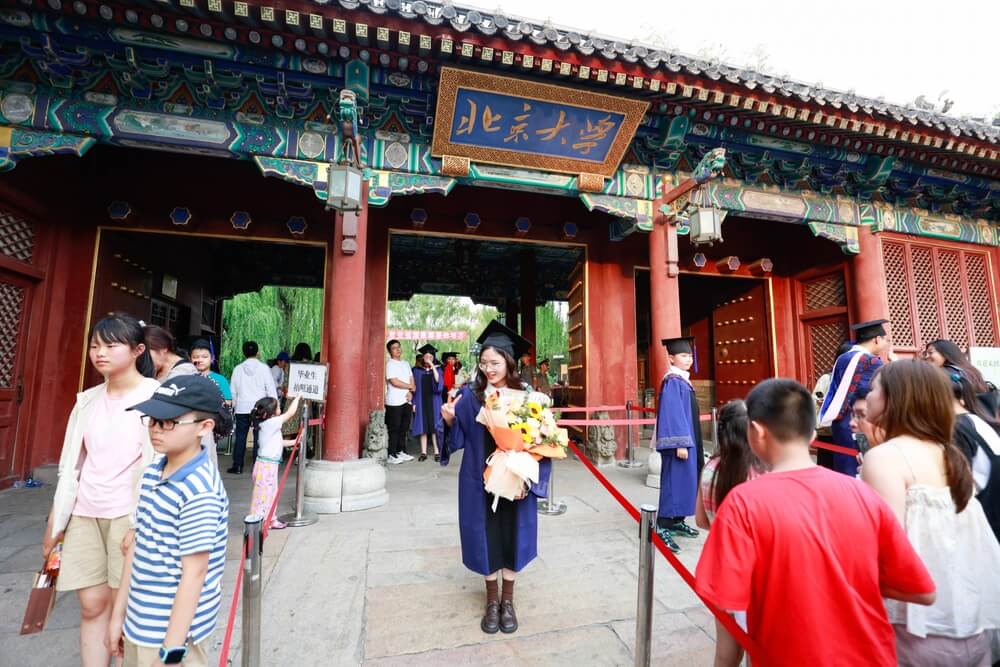During the summer, one would expect mothers of rising sixth-graders to try to make whatever time they get to spend with their children as fun and relaxing as possible.
Unfortunately, this is not the case in China, where mothers of rising middle-schoolers, and the children themselves, must wear themselves out in the summer months preparing for the coming academic year.
This is not an optional practice preoccupying only the most ambitious Chinese. It is a burden for almost all families because only the top half of all middle-school graduates are admitted to an academic high school, ensuring eligibility for university.
Intense competition filters all the way down to elementary-school students. Teachers and schools are under pressure to deliver high rates of admission to academic high schools.
To maximize the chances of success on an exam that will not take place until the ninth grade, many schools give incoming sixth-graders’ families course materials for the entire middle-school curriculum to work through over the summer.
The burden of teaching and cajoling the children to sit and study for hours each day falls disproportionately on mothers, many of whom may already have a demanding job.
Chinese fathers traditionally contribute little to childcare, and the material is too difficult for most grandparents or other childcare providers.
Many mothers even take online courses, recommended by their child’s school, to learn how to teach it.
Regardless of whether a mother is a CEO or a grocer who already works 60-hour weeks, she is likely to spend her summer nights toiling away at middle-school geometry.
The high costs of raising children
Little wonder that Chinese fertility rates have reached record lows – one child per woman in 2023 – or that a growing share of young women do not want to become mothers.
In one popular online survey, more than 60% of (mostly female) respondents, aged 18-35, said they do not want to be parents, citing the high costs of raising children, doubts about their children’s future economic prospects, and the physical pain of childbirth.
These negative attitudes toward childbirth can translate into macroeconomic problems, because low fertility rates reduce the population share of working-age people. When this happened in Japan, its economy stagnated for at least a generation.
Chinese policymakers are using every available policy tool to boost enthusiasm for parenthood among prospective mothers
Not surprisingly then, Chinese policymakers are using every available policy tool to boost enthusiasm for parenthood among prospective mothers.
Physical pain is the most straightforward problem to address. Epidural anesthesia is considered by medical professionals to be the most effective form of labor pain relief.
Currently, it is only used in 30% of deliveries in China, compared to around 67% in the United States and Canada and 82% in France.
To reduce the fear of childbirth amongst women, China’s National Health Commission has announced that all hospitals with more than 500 beds must offer epidurals by the end of this year, and hospitals with more than 100 beds must do so by 2027.
The lack of economic opportunities
But not every concern of prospective mothers has an obvious remedy. The high costs of child-rearing and the lack of economic opportunities for those children when they grow up are particularly difficult problems to solve.
Some 72% of respondents in the aforementioned survey believe that a household must earn between $4,000 and $7,000 per month to be able to afford one child.
But median household disposable income in 2024 amounted to just $572 per month in urban areas and just $228 in rural areas.
China’s government has taken steps to ease the financial burden of raising children.
The monetary supplements will do little to assuage an ordinary Chinese mother’s anxiety about her child’s future
Beyond increasing maternity and paternity leave, it recently introduced an annual childcare subsidy of around $500 for each child under three.
Regional governments provide additional incentives, such as housing subsidies and tax breaks, while disseminating pronatalist propaganda.
But these monetary supplements will do little to assuage an ordinary Chinese mother’s anxiety about her child’s future.
Even if the distinction between academic and vocational high school were erased, and all high-school graduates could apply for university, there would still be competition for admission to prestigious schools and well-paying jobs afterwards.
Childcare subsidies will not increase the number of jobs
The root problem is the relatively small number of jobs in China that provide a comfortable middle-class lifestyle, and the large number of workers vying for them.
While academic success is usually a prerequisite for getting one of those jobs, it offers no guarantees.
 Families that pour all their resources into their children’s education will likely use the subsidies toward the same education-related expenses
Families that pour all their resources into their children’s education will likely use the subsidies toward the same education-related expenses
And if the trend of rising unemployment among college graduates is any indication of things to come, then prospective Chinese parents are right to worry that their children will have to fight hard for a middle-class life.
Childcare subsidies will not increase the number of jobs and are unlikely to significantly increase fertility rates.
Families that pour all their resources into their children’s education will likely use the subsidies toward the same education-related expenses. It is the competition for jobs that causes stress for families and, ultimately, reduces fertility rates.
China is confronting a paradox. To encourage fertility, the economy needs to grow fast enough to generate more high-paying jobs.
But faster economic growth requires sufficiently high fertility to maintain a sustainable balance between the working-age population and the retired population.
China’s economic future, as well as the well-being of Chinese families, depends on figuring out how to square this circle.
Nancy Qian, Professor of Economics at Northwestern University, is Co-Director of Northwestern University’s Global Poverty Research Lab, Founding Director of China Econ Lab, and a visiting professor at the Einaudi Institute for Economics and Finance.